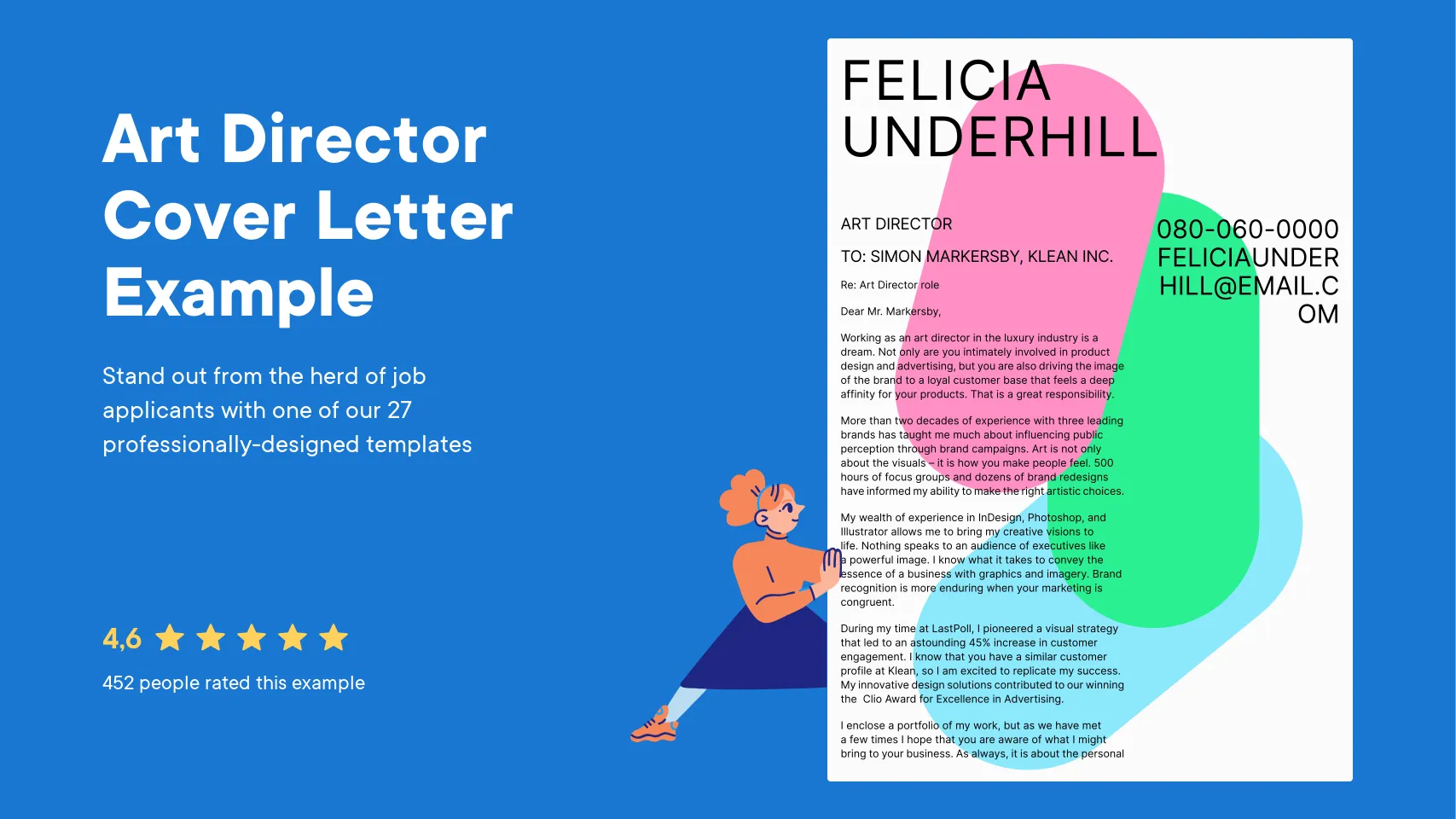What is an Art Director Cover Letter?
An art director cover letter is a crucial document accompanying your resume when applying for art director positions. It’s your first opportunity to make a strong impression on a potential employer. Unlike your resume, which is a concise overview of your experience, a cover letter allows you to express your personality, passion, and unique qualifications in more detail. It serves as a personal introduction, demonstrating why you are the ideal candidate for the specific role and company. This letter provides a space to elaborate on relevant skills and accomplishments, showcasing how your expertise aligns with the requirements of the job. A well-crafted cover letter is not merely a formality; it’s a strategic tool to set you apart from other applicants and secure an interview. It provides insights into your communication abilities, attention to detail, and understanding of the company’s needs. By using a cover letter effectively, you can significantly increase your chances of landing the art director position you desire. The cover letter is your chance to shine, so don’t underestimate its value.
Why a Cover Letter is Crucial
In the competitive field of art direction, a cover letter is far from optional; it’s essential. It’s your chance to provide context to your resume, explaining how your skills and experience match the specific job requirements. Employers use cover letters to assess your communication skills, writing style, and ability to articulate your professional narrative. A well-written cover letter demonstrates that you’ve researched the company, understand its needs, and are genuinely interested in the role. It shows you’ve put in the effort to tailor your application, making you stand out from generic applicants. Moreover, the cover letter allows you to address any potential gaps or weaknesses in your resume. Perhaps you’re transitioning industries, or maybe you have a non-traditional background; your cover letter offers a space to explain your unique journey and the value you bring. Without a cover letter, you risk being perceived as a less engaged candidate who may not fully grasp the position’s demands. It’s your opportunity to convey your enthusiasm, creativity, and commitment, making it an indispensable element of your job application strategy. Without a cover letter, you might miss opportunities to present yourself as the right candidate.
Key Elements of a Winning Cover Letter
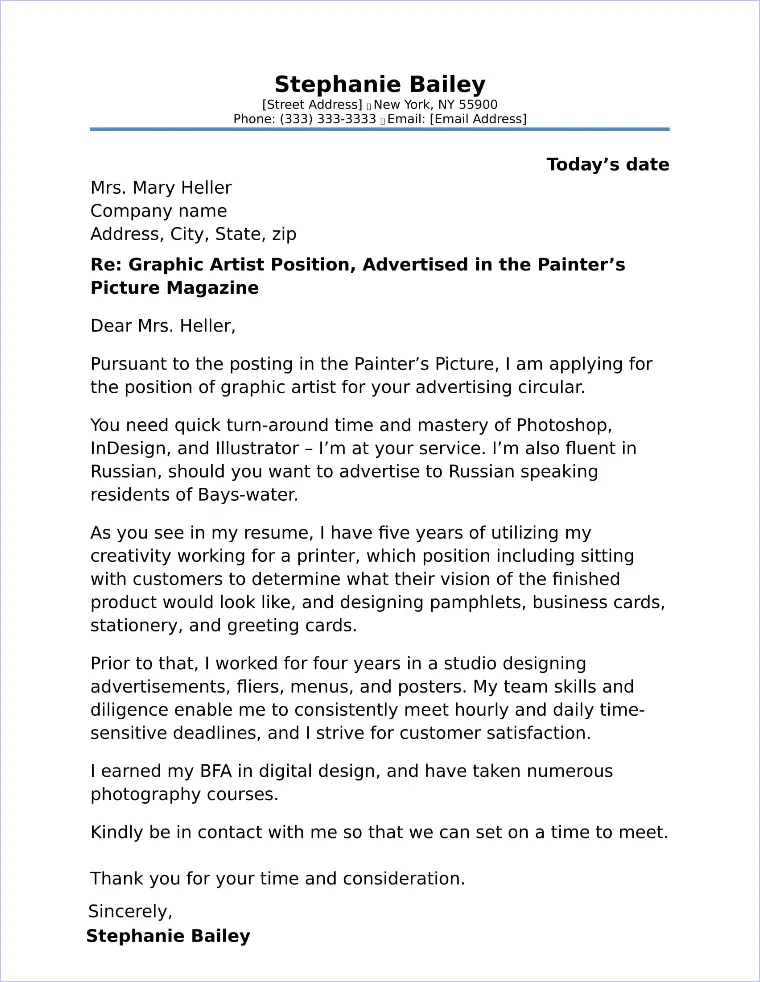
A winning art director cover letter isn’t just a summary of your resume; it’s a compelling narrative. Begin with a strong opening that immediately grabs the reader’s attention. Mention the specific position you’re applying for and how you found the opportunity. Next, showcase your relevant skills and experience, highlighting achievements and quantifiable results. Tailor your letter to the specific job and company by researching the organization and demonstrating your understanding of their values and goals. Focus on what you can offer the company, not just what you’ve done in the past. Include a brief portfolio introduction, encouraging the reader to explore your work further. Your tone should be professional yet enthusiastic, reflecting your personality and passion for art direction. Close with a call to action, expressing your eagerness for an interview and providing your contact information. Proofread carefully for any grammatical errors or typos; attention to detail is crucial in art direction. By incorporating these key elements, your cover letter will make a lasting impression and significantly boost your chances of securing an interview.
Highlight Your Skills and Experience
When showcasing your skills and experience, be specific and relevant. Don’t just list your job titles; detail your accomplishments and how you applied your skills to achieve them. Use keywords from the job description to demonstrate that you meet the requirements of the position. For example, if the job requires expertise in branding, mention your experience in developing and executing successful branding campaigns. If you’re proficient in design software, list those specific programs and provide examples of how you’ve used them in past projects. Quantify your achievements whenever possible. Instead of saying, ‘Increased website traffic,’ specify by how much, like ‘Increased website traffic by 30%.’ This concrete evidence demonstrates the impact of your work. Tailor the skills and experience you highlight to align with the company’s needs and the specific art director role. This shows you’ve researched the company and are genuinely interested in the position. Tailor your language to reflect the tone of the company and reflect your ability to adapt and connect with their brand.
Showcase Your Portfolio
Your portfolio is your most valuable asset as an art director. Your cover letter should serve as a teaser, guiding the reader to explore your work. Instead of including your entire portfolio in the cover letter (which is impractical), provide a link to your online portfolio or mention specific projects that align with the job requirements. Briefly describe the projects, highlighting your role and the results you achieved. For example, you could say, ‘In my previous role, I led the visual design for the ‘X’ campaign, which resulted in a 20% increase in customer engagement.’ If the job description mentions specific design styles or industries, select projects from your portfolio that showcase your relevant experience. Make sure your portfolio is easy to navigate, well-organized, and visually appealing. Your cover letter should build anticipation, encouraging the reader to delve deeper into your work and appreciate your creative abilities. The goal is to make them eager to see more and consider you as the best choice to meet their needs. The best cover letter highlights the value you provide through your work.
Quantify Your Achievements
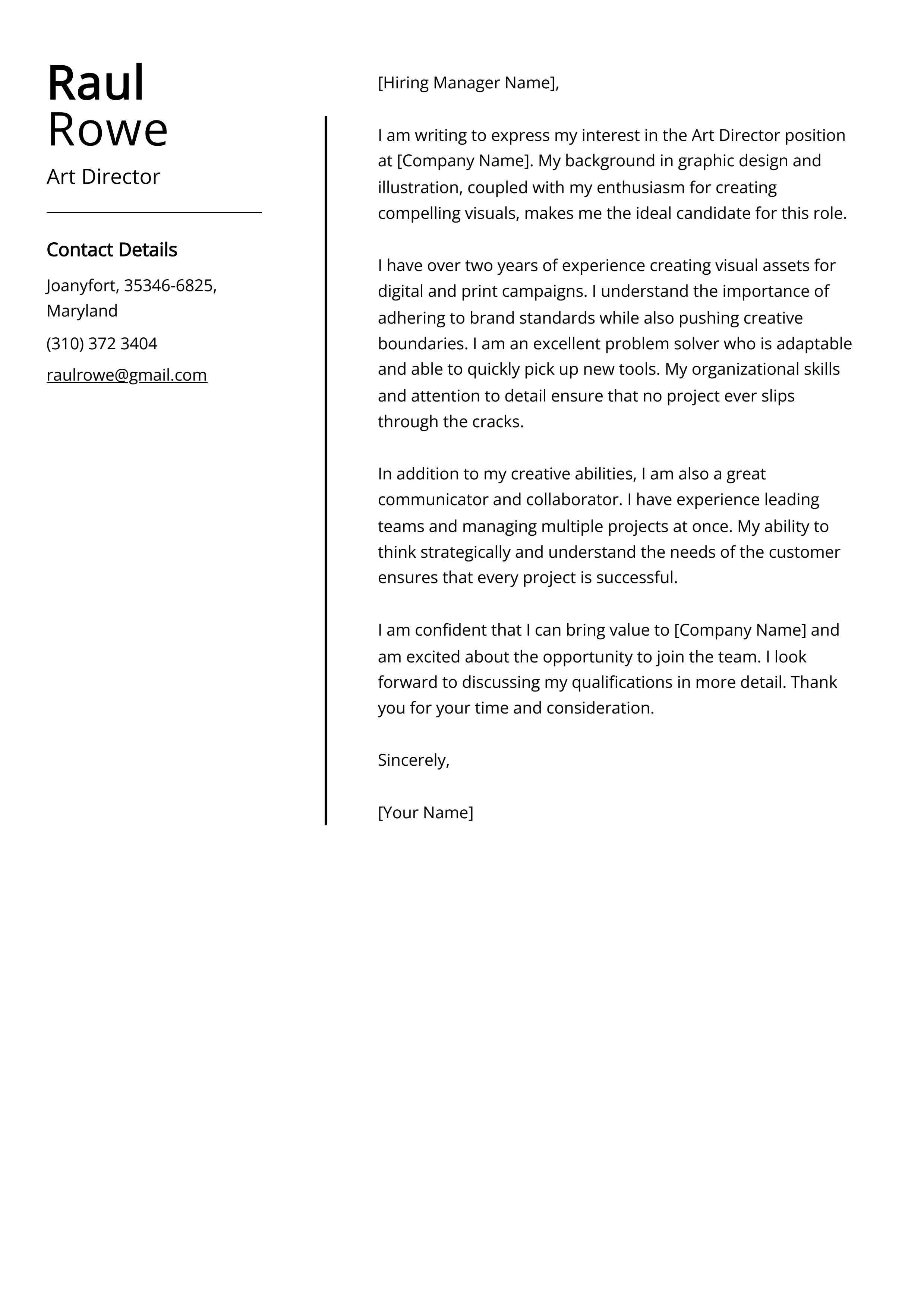
Quantifying your achievements is crucial in making your cover letter stand out. Numbers and metrics provide concrete evidence of your skills and the impact of your work. Instead of saying, ‘Improved user experience,’ say, ‘Improved user experience, leading to a 15% increase in conversion rates.’ Instead of, ‘Managed design projects,’ state, ‘Managed over 50 design projects, delivering them on time and within budget.’ Use metrics to showcase the value you brought to previous roles. For example, mention any increases in sales, website traffic, or customer engagement that resulted from your creative work. Include specific numbers, percentages, and dollar amounts whenever possible. Consider using a bulleted list to showcase achievements concisely. Quantitative achievements demonstrate that you’re results-oriented and have a track record of success. By quantifying your accomplishments, you make a compelling case for your abilities and provide potential employers with tangible evidence of your capabilities. This is the most convincing way of getting the hiring manager to read your resume.
Tailor Your Letter to the Job
Generic cover letters are easily identified and often discarded. The key to a winning cover letter is tailoring it to each specific job and company. Research the company and the specific art director role before you start writing. Understand the company’s values, brand, and recent projects. Identify the key requirements and responsibilities mentioned in the job description. Then, customize your cover letter to address those specific needs. Highlight the skills and experience that align with the job requirements. Use keywords from the job description, but avoid keyword stuffing; let it flow naturally. Explain why you are particularly interested in this specific role and company. Demonstrate that you’ve put in the effort to understand their needs and vision. Personalize your letter with examples of how your previous work has prepared you for the role and the specific challenges the company faces. This level of customization shows your genuine interest and makes you a more appealing candidate. Tailoring your letter shows that you can go the extra mile and are committed to their success.
Demonstrate Your Passion for the Role
Your cover letter should be a reflection of your enthusiasm for art direction and your passion for the specific role. Express your genuine interest in the company and its mission. Highlight what excites you about the opportunity and what you hope to achieve in the role. Share why you are drawn to the company’s work and how you see yourself contributing to their success. Use specific examples to illustrate your interest. If you admire a particular project they’ve done, mention it and explain why. Let your personality shine through, but maintain a professional tone. Art direction is a creative field, so don’t be afraid to show your artistic flair and enthusiasm. Your passion should be evident in every sentence of your cover letter. By demonstrating your excitement and commitment, you’ll make a memorable impression and increase your chances of getting an interview. A cover letter is a personal statement, so let your passion drive it and motivate your reader.
Formatting and Tone
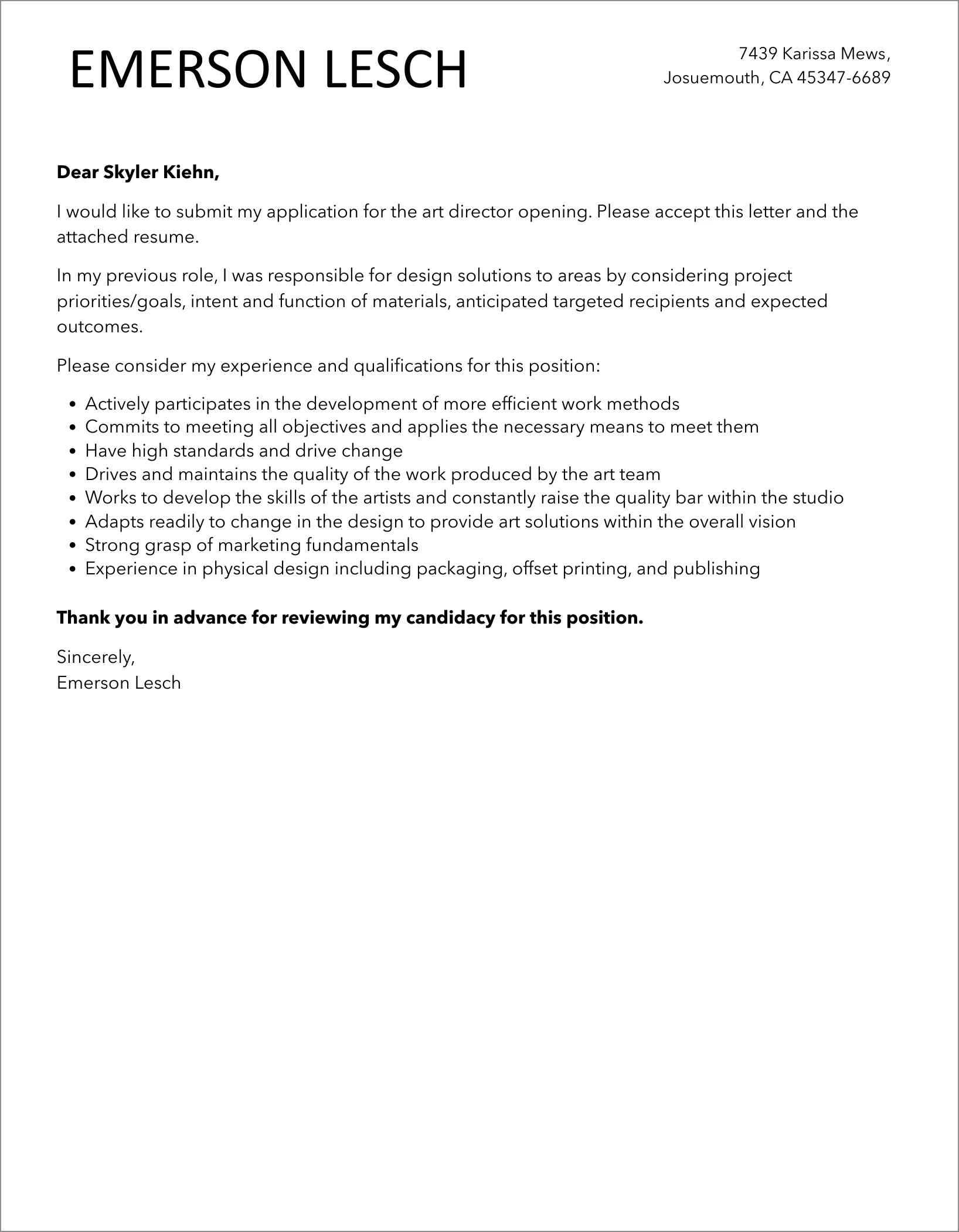
The formatting and tone of your cover letter are as important as its content. Maintain a professional and polished appearance. Use a clean, readable font like Arial, Helvetica, or Times New Roman. Ensure consistent formatting throughout the letter, including margins, spacing, and bullet points. Address the hiring manager by name, if possible. If you can’t find the name, use a professional greeting like ‘Dear Hiring Manager.’ Maintain a positive, enthusiastic, and confident tone. Use active voice and avoid passive language. Be concise and to the point, but avoid sounding generic. Proofread the letter carefully for any grammatical errors or typos. A well-formatted and error-free cover letter demonstrates your attention to detail and professionalism. Make sure the tone matches the company’s culture and the nature of the role. Your aim is to communicate effectively, so use clear, concise language that is easy to understand. Your formatting and tone set the stage for your message.
Cover Letter Examples for Art Director Positions
To get you started, here are several example cover letters adapted for various scenarios. Remember to customize these templates to fit your specific experience and the job requirements. Use these as models to get you started. The following examples are starting points for you to customize.
Example 1 Advertising Agency
This example focuses on showcasing creativity and campaign experience. The candidate highlights successful projects and their ability to work with a team. Emphasize your experience in creating visually stunning campaigns that meet deadlines and exceed expectations.
Example 2 Design Studio
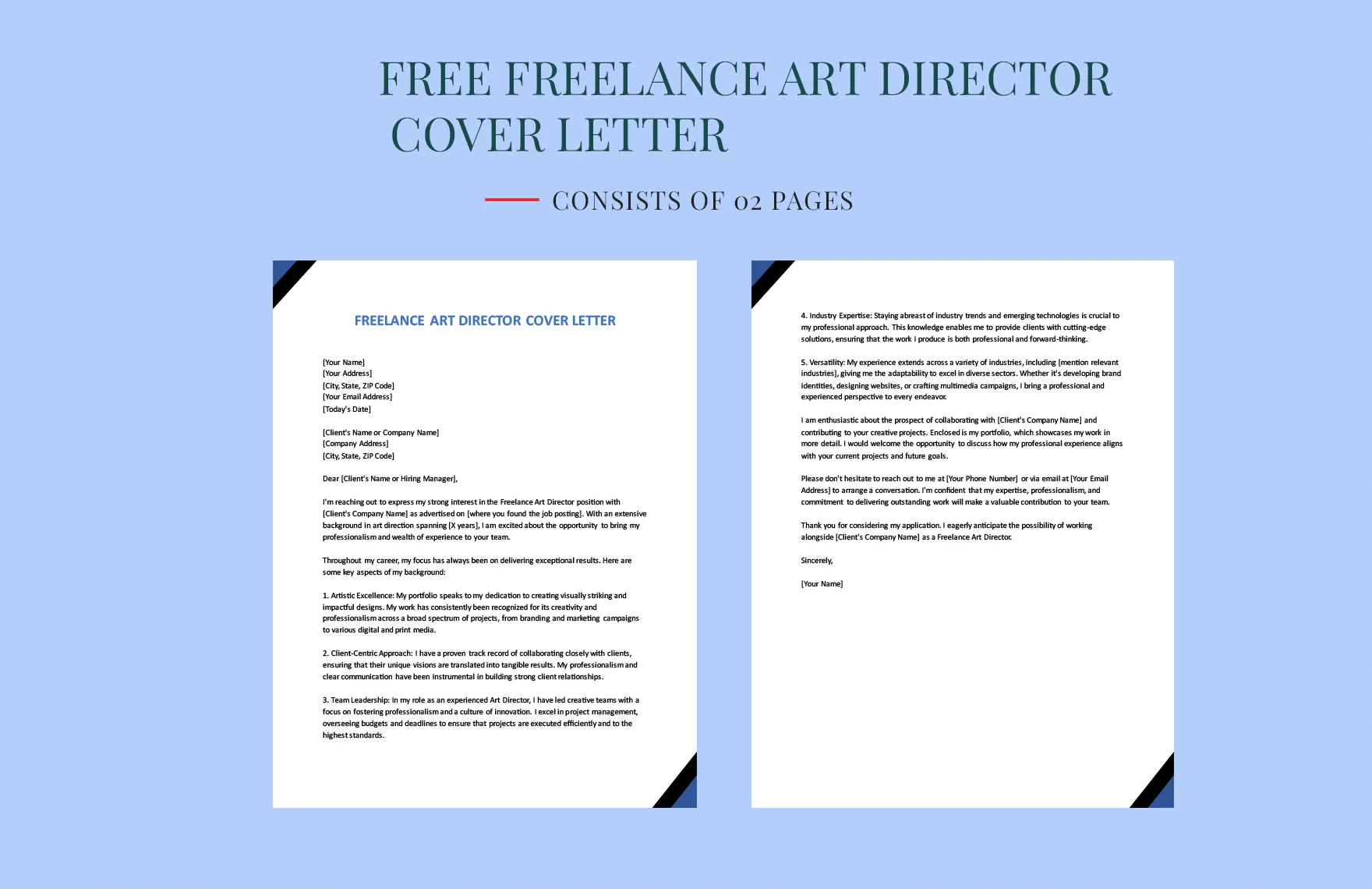
This example is for a design studio role, emphasizing skills in branding, layout, and attention to detail. The letter focuses on design aesthetics and the ability to create visually appealing products. Mention your experience in designing websites, marketing materials, and other print media.
Example 3 In-house Marketing Team
This example highlights experience in managing projects, working with cross-functional teams, and meeting deadlines. Highlight your ability to understand marketing goals and create designs that improve business outcomes.
Common Mistakes to Avoid
Avoid common mistakes that can hurt your chances. Do not use generic cover letters, as they appear impersonal and lack interest. Never include typos or grammatical errors, as they make you appear careless. Don’t make the cover letter too long; keep it concise and to the point. Don’t be overly casual or informal. Avoid negative language or badmouthing previous employers. Do not focus on what you want; instead, concentrate on what you can offer the company. Always follow up, but don’t be pushy. By avoiding these mistakes, you can increase your chances of making a good impression and getting an interview.
Proofreading and Editing
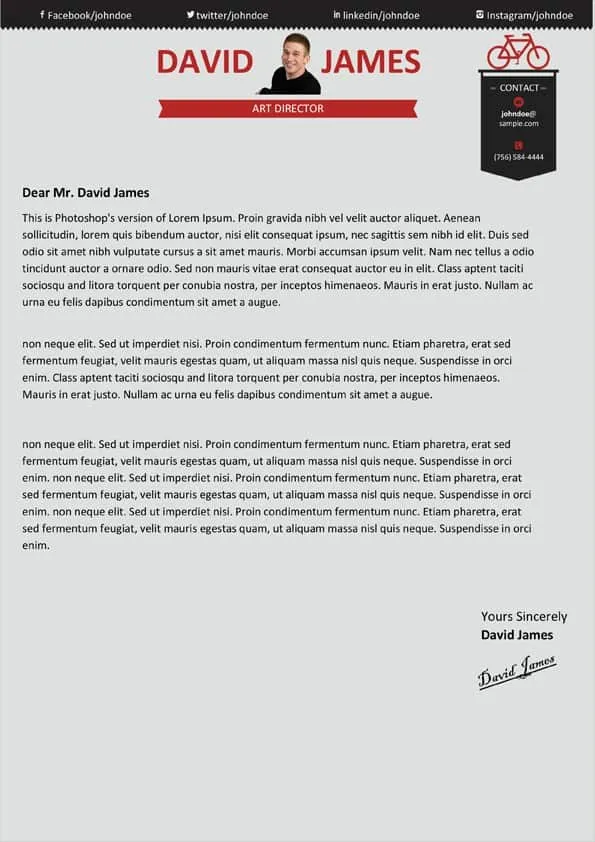
Proofreading and editing are critical steps in the writing process. After writing your cover letter, review it carefully for errors. Read it multiple times, each time with a different focus. Check for grammatical errors, spelling mistakes, and typos. Ensure that the formatting is consistent and that all the information is accurate. Ask a friend or colleague to read your cover letter and provide feedback. Fresh eyes can catch errors you might have missed. Ensure your letter flows logically and that your message is clear and concise. Make sure the tone is appropriate for the job and the company. Proofreading and editing are not just about catching mistakes; they’re also about refining your writing and making your cover letter more impactful. A polished cover letter shows that you pay attention to detail and take pride in your work. Before submitting, always review the letter one last time.
The Importance of a Strong Close
Your closing is your final opportunity to leave a lasting impression. It should be memorable, professional, and include a clear call to action. Reiterate your interest in the role and the company. Express your enthusiasm and highlight why you are a good fit. Thank the reader for their time and consideration. Provide your contact information (phone number and email address) so they can easily reach you. If applicable, mention your availability for an interview. A strong close should leave the reader with a positive impression of you and your capabilities. End the cover letter with a professional closing, like ‘Sincerely’ or ‘Best regards.’ Ensure your closing is memorable and prompts the reader to take the next step, which is usually contacting you. A well-crafted close is what turns an application into a conversation.
